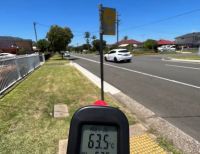Separately, two Data Recovery System packages storing more than 200 gigabytes of SuperBIT’s information descended by parachute and landed safely, including a map of dark matter around galaxies and stunning photos of space. Dark matter is an invisible substance that has a mass six times greater than regular matter in the universe.
A study led by Dr Ellen Sirks from the University of Sydney’s School of Physics, published today in the journal Aerospace, provides instructions to build the Data Recovery System she designed, and recounts the mission that demonstrated, for a relatively small cost, scientists can ensure the information they gather can be salvaged in the worst-case scenario.
The authors of the study, comprised of a team of international scientists from Australia, the United Kingdom, the United States, Canada, Europe and Taiwan, said that the first use of the Data Recovery System capsules during a live science mission proved a huge success.
“Our telescope got to the point where it was completely destroyed, and we lost high bandwidth communications, so not only did the Data Recovery System work; it was really quite essential to the mission’s success,” Dr Sirks said.
“When you're dropping something from the sky, in our case from 33 kilometres, there's always a chance that something goes wrong, so recovery packages are quite essential to keep your data safe.
“This drop package is something we've been developing for about five years, but only now have we been able to test it in its final configuration. It's got to the point where NASA wants to start producing these packages for other science missions as well, so this was really our final test to show that this system works.”
















